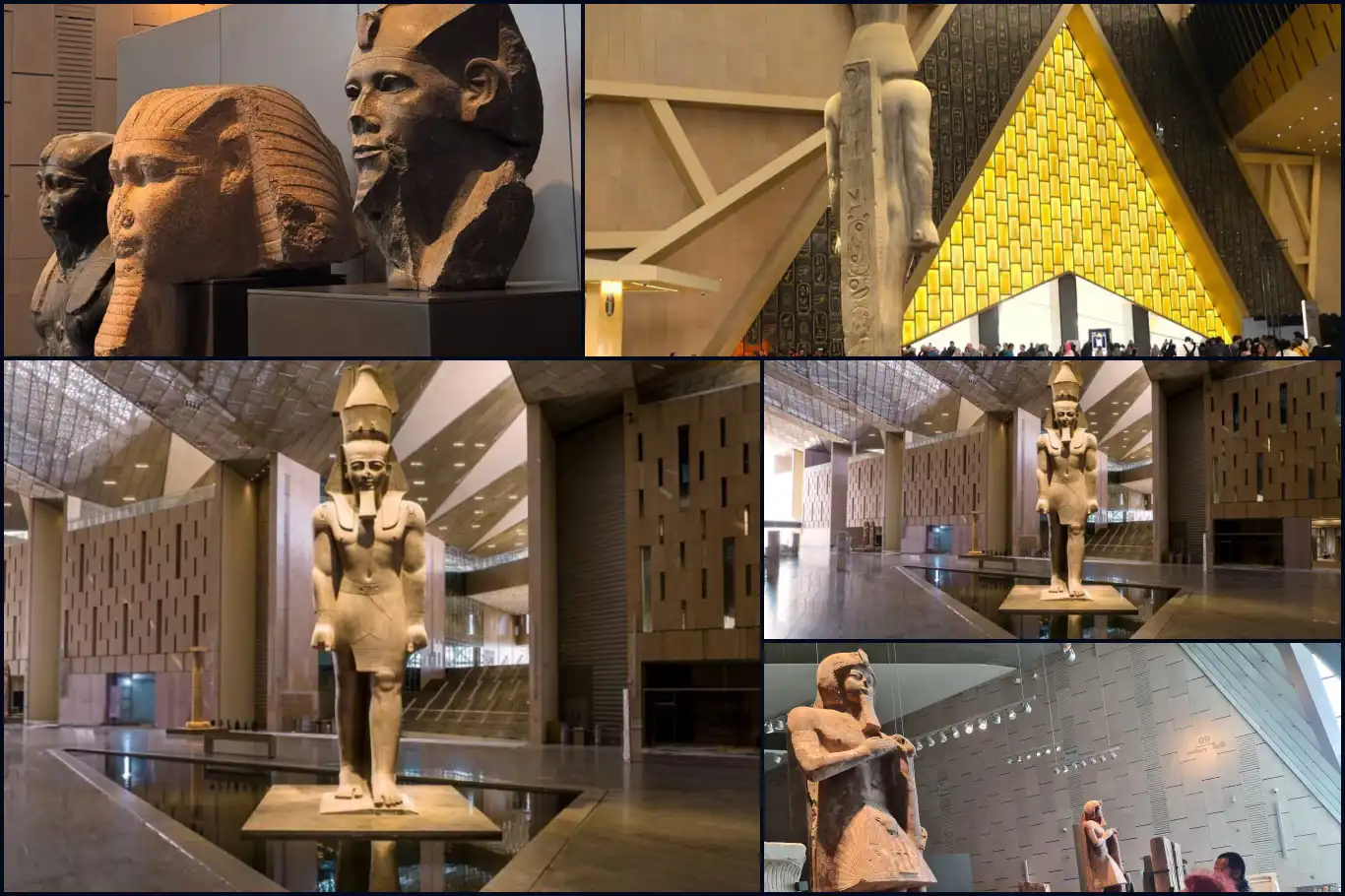Tutankhamun’s golden legacy unveiled at Grand Egyptian Museum


After years of anticipation and several postponements, the long-awaited Grand Egyptian Museum (GEM)—the world’s largest archaeological museum—officially opens its doors to the public this weekend, marking a monumental moment in Egypt’s modern history.
Originally slated for a July opening, the $1 billion mega-museum, located just two kilometers from the Giza Pyramids, spans an area of 120 acres and houses over 50,000 artifacts that collectively narrate more than 5,000 years of ancient Egyptian civilization. The GEM not only represents a new chapter in Egypt’s museum culture but also stands as a testament to the country’s enduring commitment to preserving and celebrating its pharaonic legacy.
The official inauguration ceremony—attended by President Abdel Fattah el-Sisi, senior Egyptian officials, foreign dignitaries, UNESCO representatives, and global archaeologists—will feature a grand cultural performance, light shows illuminating the pyramids, and a public dedication to Egypt’s archaeological community.
The museum’s completion has been years in the making. First conceived in 2002 and under construction since 2010, GEM’s opening had been delayed multiple times due to political unrest, the 2011 revolution, and later, the COVID-19 pandemic. A partial “soft opening” in October 2024 allowed limited access to 12 galleries, but the most treasured exhibits—including the complete Tutankhamun Collection—remained sealed until now.
At the heart of the museum lies the Tutankhamun Galleries, which bring together for the first time all 5,398 objects unearthed from the young pharaoh’s tomb by British archaeologist Howard Carter in 1922. Among these are the boy king’s famed golden death mask, gilded coffin, ceremonial chariot, and bejeweled throne—each restored and displayed using state-of-the-art conservation technology.
Previously unseen artifacts, including six royal chariots, hundreds of weapons, and fragments of intricate gold panels, offer new insights into Tutankhamun’s life as not just a “boy king” but a military leader and skilled warrior. A particularly stunning highlight is the celestial dagger found over Tut’s abdomen—crafted from meteorite iron, symbolizing divine power and connection with the heavens.
Egyptologist Salima Ikram noted that the artifacts reveal “a far more complex portrait of Tutankhamun than we ever imagined—a young monarch who understood diplomacy, warfare, and art.”
Another major highlight is the unveiling of 132 underwater artifacts recovered from Egypt’s sunken cities of Thonis-Heracleion and Canopus, discovered by French marine archaeologist Franck Goddio and his team. These treasures, submerged for over a millennium beneath the Mediterranean Sea, include two colossal statues of a Ptolemaic king and queen standing over 16 feet tall.
“These are among the best-preserved examples of Ptolemaic royal art,” Goddio said. “Their new home at GEM allows the world to witness Egypt’s lost maritime glory.”
The underwater section also features fragments of temples, bronze vessels, and jewelry—illustrating the fusion of Egyptian and Hellenistic civilizations that thrived in the Nile Delta before being swallowed by the sea.
The museum will also showcase recent archaeological finds from the Saqqara necropolis, south of Cairo. Excavations since 2020 have unearthed hundreds of sealed coffins, bronze statues, and ritual items, offering an unprecedented glimpse into late-period Egyptian burial practices.
“These discoveries deepen our understanding of the afterlife in ancient Egypt,” said renowned Egyptologist Zahi Hawass. “Each coffin bears a unique face and inscriptions from the Book of the Dead—each one tells its own story.”
The Grand Egyptian Museum embraces modernity alongside antiquity. It features immersive digital installations, virtual reconstructions of tombs, and climate-controlled conservation labs. Visitors can explore ancient Egypt through interactive holograms, 3D mapping, and multimedia projections—transforming the museum experience into a journey through time.
Beyond its cultural significance, the GEM is expected to boost Egypt’s tourism industry, which has rebounded strongly in recent years. Officials project that the museum could attract 8–10 million visitors annually, positioning Cairo and Giza once again at the heart of world heritage tourism.
Minister of Tourism and Antiquities Ahmed Issa described the opening as “a historic milestone, not only for Egypt but for humanity. This is not just a museum—it is a bridge between our glorious past and our promising future.”
As fireworks light up the skies above the Giza Plateau, the Grand Egyptian Museum opens not merely as a house of artifacts but as a living monument to human civilization—a place where the spirit of the pharaohs meets the technology of the modern world. (ILKHA)
LEGAL WARNING: All rights of the published news, photos and videos are reserved by İlke Haber Ajansı Basın Yayın San. Trade A.Ş. Under no circumstances can all or part of the news, photos and videos be used without a written contract or subscription.
Ukraine’s Main Intelligence Directorate (HUR) has claimed responsibility for a special operation that struck the Koltsevoye oil pipeline, one of Russia’s major fuel arteries located just 50 kilometers from Moscow, dealing a significant blow to the Kremlin’s military supply network.
Chinese President Xi Jinping announced on Saturday that China will host the 33rd Asia-Pacific Economic Cooperation (APEC) Economic Leaders’ Meeting in 2026 in Shenzhen.
Colombian President Gustavo Petro has called for his country to submit a formal proposal to the United Nations demanding an end to the US airstrikes targeting alleged drug-trafficking vessels in the Caribbean Sea and the Pacific Ocean.